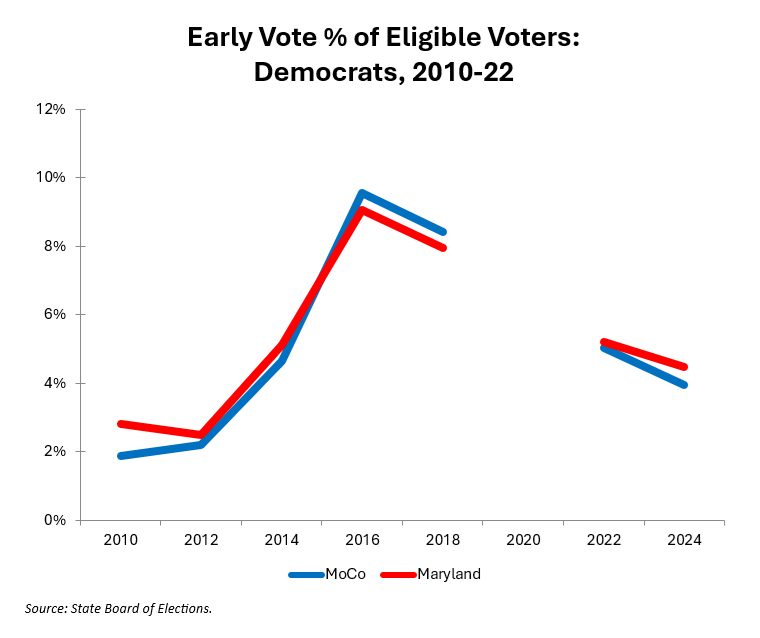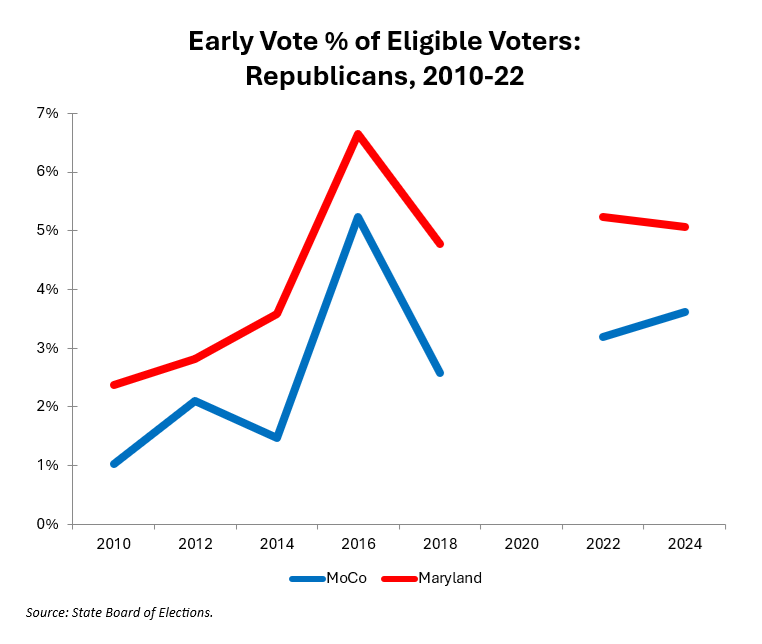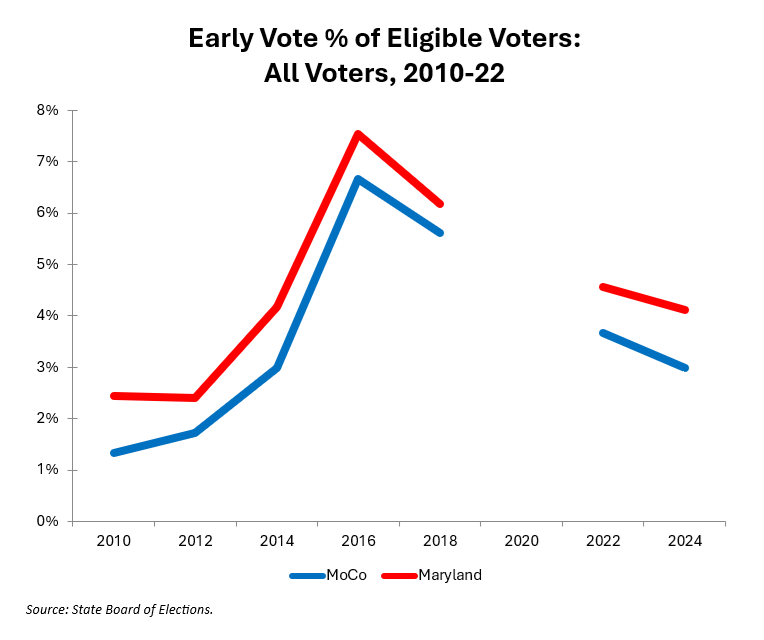By Adam Pagnucco.
With early votes now cast, it seems that this year’s presidential primary could have a low turnout. Why do I say that?
Let’s consider early vote turnout rate first. Maryland established early voting through a constitutional amendment passed in 2008 and first used it in 2010. By 2016, it was used by 7.5% of all eligible voters in that year’s primary and has since fallen off. In 2020, early vote was not used in the primary due to the pandemic.
The chart below shows the percentage of eligible Democrats who used early vote in the primary from 2010 through 2024. The blue line shows Montgomery County Democrats while the red line shows all Maryland Democrats.

For primary-voting Democrats, early voting peaked in 2016 at 9.5% of eligible Dems in MoCo and 9.1% of eligible Dems statewide. That was a big year with contested primaries for president, U.S. Senate and two heavily Democratic congressional districts (4 and 8). This year, early vote was used by 3.9% of eligible MoCo Dems and 4.5% of eligible Maryland Dems, a big decline from 2016. This probably reflects in part the popularity of mail voting among Dems.
The chart below shows the percentage of eligible Republicans who used early vote in the primary from 2010 through 2024. The blue line shows Montgomery County Republicans while the red line shows all Maryland Republicans.

Once again, there is a decline from 2016 but it’s not as steep. Unlike the Democrats, MoCo Republicans used early voting more in 2024 than in 2022. This chart probably reflects skepticism among many Republicans of mail voting.
The chart below shows the percentage of all eligible voters who used early vote in the primary from 2010 through 2024. The blue line shows all Montgomery County voters while the red line shows all Maryland voters.

The data for all voters resembles the data for Democrats. That’s because roughly 60% of all Maryland voters are Democrats. Unaffiliated voters typically have single-digit turnout rates in primaries because they are prohibited from voting in partisan primaries, so they don’t have the ability to affect this statistic much.
So we can see that early voting has not returned to its pre-pandemic peak, at least not in primaries. What will overall turnout be this year? We’ll have more data in Part Two.
